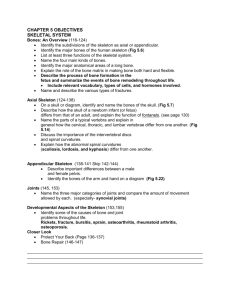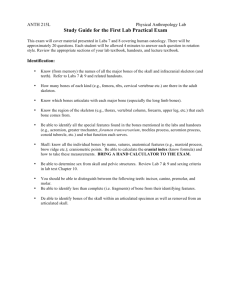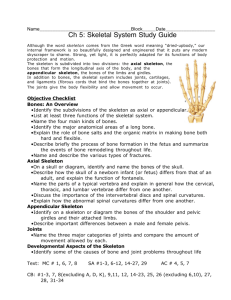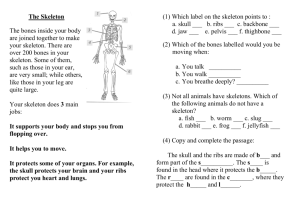Bodies on the move
advertisement
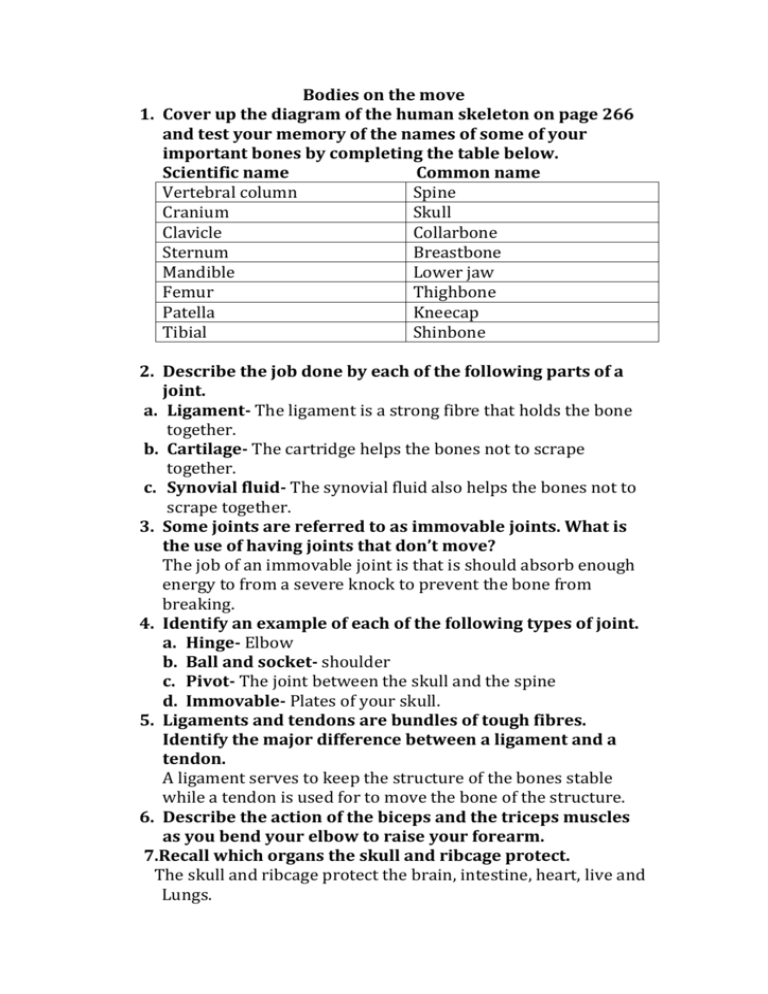
Bodies on the move 1. Cover up the diagram of the human skeleton on page 266 and test your memory of the names of some of your important bones by completing the table below. Scientific name Common name Vertebral column Spine Cranium Skull Clavicle Collarbone Sternum Breastbone Mandible Lower jaw Femur Thighbone Patella Kneecap Tibial Shinbone 2. Describe the job done by each of the following parts of a joint. a. Ligament- The ligament is a strong fibre that holds the bone together. b. Cartilage- The cartridge helps the bones not to scrape together. c. Synovial fluid- The synovial fluid also helps the bones not to scrape together. 3. Some joints are referred to as immovable joints. What is the use of having joints that don’t move? The job of an immovable joint is that is should absorb enough energy to from a severe knock to prevent the bone from breaking. 4. Identify an example of each of the following types of joint. a. Hinge- Elbow b. Ball and socket- shoulder c. Pivot- The joint between the skull and the spine d. Immovable- Plates of your skull. 5. Ligaments and tendons are bundles of tough fibres. Identify the major difference between a ligament and a tendon. A ligament serves to keep the structure of the bones stable while a tendon is used for to move the bone of the structure. 6. Describe the action of the biceps and the triceps muscles as you bend your elbow to raise your forearm. 7.Recall which organs the skull and ribcage protect. The skull and ribcage protect the brain, intestine, heart, live and Lungs. 8.Look carefully at each of the skeletons below. Three of them are incomplete. Identify which skeletons are incomplete and name the missing parts. The incomplete Skelton’s are B,C and E. The missing part to skeleton b is a missing bottom jaw. The missing part of skeleton c is the missing shinbone. The missing part of skeleton e is the missing kneecap. 9. Explain why our skeleton isn’t made of just one bone. This is because our bodies need to be able to move. 10. Explain why it is that, in a similar accident, an adult gets a broken bone while a child may suffer only a greenstick fracture. This is because children’s bones are much more flexible then adults. 11. Find out where the following bones are in the human skeleton. a. The Humerus is found in the arm. B. The fibula is found in the shin. C. Coccyx is found in the lower back. D. Scapula is found in the shoulder blade. 12. The muscles in your food pipe contract and relax to push food down into your stomach. Are these muscles voluntary or involuntary muscles? Explain your answer. The answer is voluntary, as you have to use the muscles to swallow. 13. Describe what would happen if your cartilage in your knee just wore out. It would be very painful because the bones would be rubbing together.


